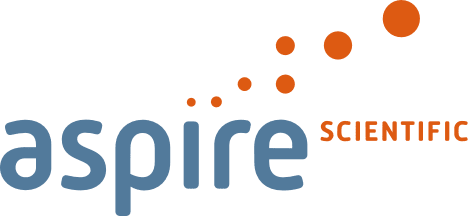The 20th Annual Meeting of the International Society for Medical Publication Professionals (ISMPP) took place once again in Washington, DC, from 29 April – 1 May with the theme ‘Storytelling: Its Art and Power’. Incorporating stories into medical publications can clarify complex ideas, build empathy, and establish trust, ultimately dispelling stigmas and misinformation. Over 700 attendees discovered the power of storytelling to unlock greater understanding in medical communications.
A summary of the second day of the meeting is provided below to benefit those who were unable to attend the meeting, and as a timely reminder of the key topics covered for those who did.
Summaries of Day 3 (continued)
The future intersection of medical affairs and publications – are you ready for it?
KEY TAKEAWAY
- A cross-functional working relationship between publications and medical affairs will be essential for navigating the rapidly changing publications landscape.
Gary Lyons (Avalere Health) presented an interesting and engaging session, which began with an emphasis on the increasingly important role that medical affairs plays in the delivery of content in what is now a rapidly evolving landscape. It was reasoned that the increased complexity of the current landscape is being driven by digital technology, the emergence of omnichannel strategy, and utilisation of modular content. During his presentation, Lyons covered the 4 key components on the path to engagement: audiences, content, channels, and capabilities.
Audiences
Lyons emphasised the importance of considering multiple audiences when developing a publication, including experts, specialists, communities, patients, and patient advocates. He explained that we should not expect the information to trickle down this cascade of potential audiences, but, instead, content should be developed to reach out to a broader audience.
How an audience prefers to receive content was also highlighted as a key consideration, as there has been an increase in demand for information to be delivered digitally. Despite this increase in demand, a digital divide exists between the preference for digital delivery and the actual availability of information and data via digital channels.
We should not expect the information to trickle down the cascade of potential audiences, but, instead, content should be developed to reach out to a broader audience.
Content
In the next part of the session, content was discussed, with an emphasis on the growing need for conciseness. To achieve this, Lyons recommended that digital features and enhanced publication content should be considered when possible.
Channels
Connecting the dots between different channels to create a journey of engagement should be a key aim in the development of all publications. It is therefore important to consider all content that is being created alongside a publication, such as training slide decks and enhanced publication content, and how these channels can be connected.
Connecting the dots between different channels to create a journey of engagement should be a key aim in the development of all publications.
Capabilities
Two key points were outlined in this section of the presentation: the growing need for modular content and the future role of AI in supporting publications. Modular content was described as a way of fragmenting content into smaller pieces that can be pre-approved and then used for future engagement. Thinking of ways to use content in a more fragmented way can help increase the speed and flexibility of future content development and delivery, especially when requested at short notice.
Lyons suggested that AI may have a supporting role to play in publication development, highlighting 3 specific points at which AI could be utilised:
- kick off calls, to produce a summary of meeting discussions
- post-draft development, to help with data checks, CONSORT checklists, and proofreading
- post-submission, to assist with creation of enhanced publication content.
To navigate the ever-changing and increasingly complex publications landscape, there will be a need to embrace omnichannel planning, utilise modular content, and find ways to use AI to help drive content creation and improve efficiency.
Towards patient-friendly electronic product information (ePI)
KEY TAKEAWAY
- Current product information (PI) is not fit for purpose – moving to ePI provides an opportunity to link to patient-friendly materials providing medical information in plain language.
Panellists Chris Winchester (Oxford PharmaGenesis), Trishna Bharadia (patient advocate, The Spark Global), Behtash Bahador (CISCRP), Catherine Skobe (Pfizer), and Christopher Rains (CPR BioPharma Consulting) shared their thoughts on the journey towards patient-friendly ePI.
The evolution of product information
Winchester kicked off the session by outlining the journey towards digital transformation of PI. Although paper PI is still very much alive, it is widely unread, and recent years have seen a transition away from the paper format. Winchester elaborated, explaining how we are currently in the PDF PI era and edging towards the digital era, where PI could be tailored towards indication, patient information preferences, and the background of the reader. The clear shift in the FDA’s perspective on PI since the first half of the 20th century signals that what was once considered a back-covering exercise is now regarded as an integral part of motivating better health outcomes.
Are current product information leaflets fit for purpose?
Discussing the evolving perspective on ePI and the role of publication professionals, Bharadia noted that PI leaflets have made some progress towards becoming patient friendly in the UK, but in other countries, such as the US, they are far from being suitable. She stressed the importance of the patient as the intended audience and that the current ‘one size fits all’ approach is suboptimal, given the variation in health literacy among patients.
What is driving the digitisation of product information?
Rains explained that, as it stands in the EU, ePI must be identical to paper PI, and paper PI must also be provided. Consequently, each year, 500,000 tonnes of carbon dioxide and 11 billion gallons of water are needed to produce the 100 billion paper PI leaflets printed.
Bahador stated that the high appetite for plain language materials and increased patient engagement is certainly a driver in the digitisation of PI. Moreover, results from a recent Global Perceptions and Insights Survey revealed that sharing more information in understandable terms drives trust and matters to patients.
Each year, 500,000 tonnes of carbon dioxide and 11 billion gallons of water are needed to produce the 100 billion paper PI leaflets printed.
How can ePI best meet the needs of patients and other audiences?
Suggestions for how ePI can best meet patients’ needs from Skobe and Bharadia included:
- ePIs should contain links to publications and, most importantly, plain language summaries. This can facilitate understanding of scientific jargon, reaping benefits such as increased medication compliance.
- ePI development should involve the intended audience, including patients and patient organisations, such as the Patient Information Forum.
How can publications and medical communications professionals get involved in optimising ePI?
Rains urged publications professionals to work closely with cross-functional teams, including regulatory/labelling colleagues, in the journey towards optimised ePI. Publication teams are already creating content in different formats for different audiences (eg, plain language summaries of publication). Linking these materials to product labels offers the perfect opportunity to see them used in settings beyond journal publications.
Wrapping up the discussion, the panel issued a call to action, suggesting publications professionals leverage the momentum behind the current focus on patient-centric materials to ensure regulatory teams are aware of the patient-centric materials they produce.
Publications professionals can leverage the momentum behind the current focus on patient-centric materials to ensure regulatory teams are aware of the patient-centric materials they produce.
Hot topics and meeting highlights
Bringing the 20th Anniversary Meeting of ISMPP to a close, Jenny Ghith (Pfizer), Tomas Rees (Oxford PharmaGenesis), Jason Gardner (Real Chemistry), Richard Davis (ApotheCom), and Rob Matheis (President and CEO, ISMPP) reflected on the hottest topics and highlights from the meeting.
Storytelling
The panel promoted the important role of medical communications professionals as storytellers, emphasising the need for different storytelling approaches for different outputs. Ghith saw the role of medical writers as ‘inventors’ with the task of bridging the gap between different stakeholders and leveraging storytelling across teams.
“We are all storytellers, but we just maybe don’t realise it. Everything we do is about telling stories.” – Tomas Rees
Artificial intelligence
Ghith described how we have passed the initial ‘hype’ phase for AI applications in medical communications and now find ourselves in the ‘trough of disillusionment’, where we will meet and take on the challenges and limitations of AI after the initial period of excitement. For Rees and Gardner, a key take-home message was that human input was essential for successful implementation of AI tools. While AI can analyse data and identify patterns, it cannot provide insight on the key question of why the data are what they are. Matheis felt that connecting and feeding AI systems with appropriate context would ensure relevant and usable outputs, while Davis reiterated the importance of understanding the distinction between GenAI and other (non-generative) types of AI.
AI is a tool that can enhance human intelligence, not replace it.
Patients
A key theme emerging from this year’s sessions on patient involvement in medical communications was that patients’ voices must be integrated into discussion about AI, ensuring their concerns and needs are addressed throughout the process. Gardner stressed the importance of non-traditional outcomes to make sure the patient voice is incorporated into medical communications. Reflecting on the session on ePI, Rees thought that there was an opportunity to address the accessibility of product information, using ePI tools to generate more patient-friendly materials. Considering how often patients are required to make active healthcare decisions, Matheis felt there was a need to be mindful of what information was available to patients and how it was presented to them – and this all comes back to a need for effective storytelling.
“We have to be mindful that as we put medical information out there, patients are making decisions for themselves – they have different needs and different ways of processing information – it all comes full circle to storytelling.” – Rob Matheis
Publishing metrics and insights
Rees finished with the hot topic of publishing metrics and insights, noting the increasing interest in metrics due to the need to show the value of what we do as medical publications professionals. He thought that current metrics did not always capture a publication’s true impact, so he was encouraged by the level and direction of discussions surrounding metrics and excited by the progress to be made by the ISMPP Social Media & Web-based Metrics Committee on metrics in the near future.
Every publication has its own goal, so there’s a need for increased sophistication about how we measure achievement of that goal.
Written as part of a Media Partnership between ISMPP and The Publication Plan, by Aspire Scientific, an independent medical writing agency led by experienced editorial team members and dedicated, industry experts who will deliver medical writing and communications excellence.









